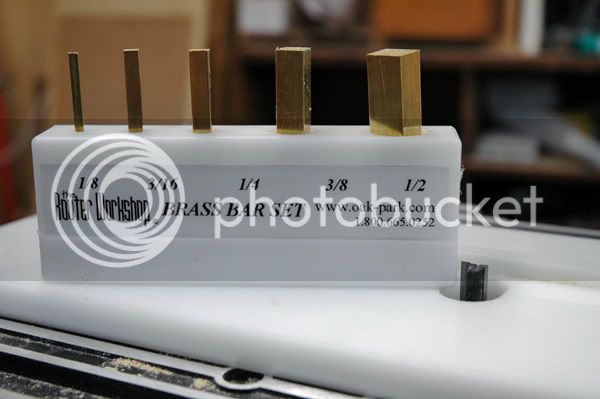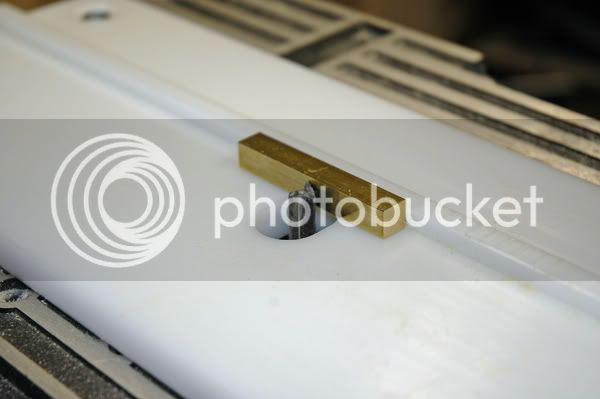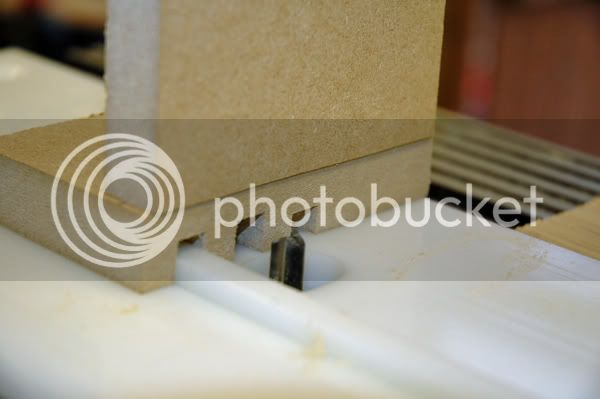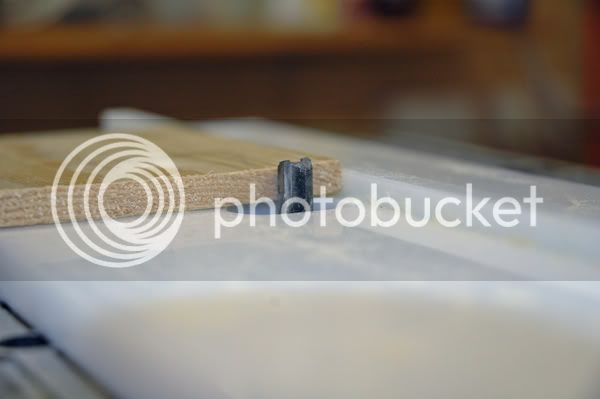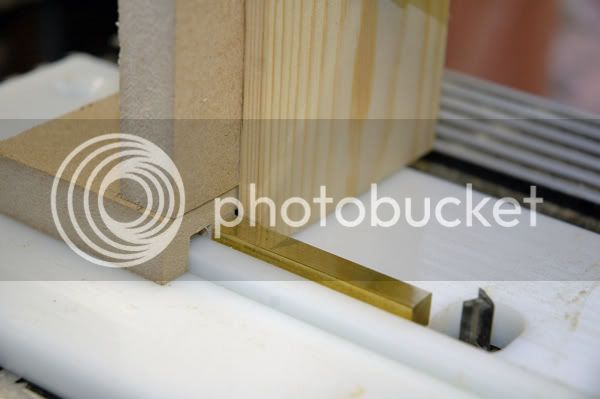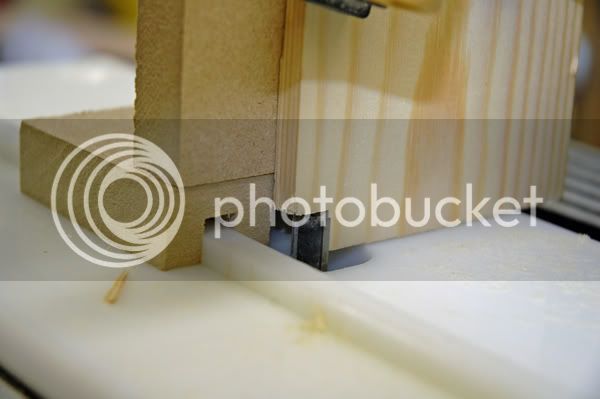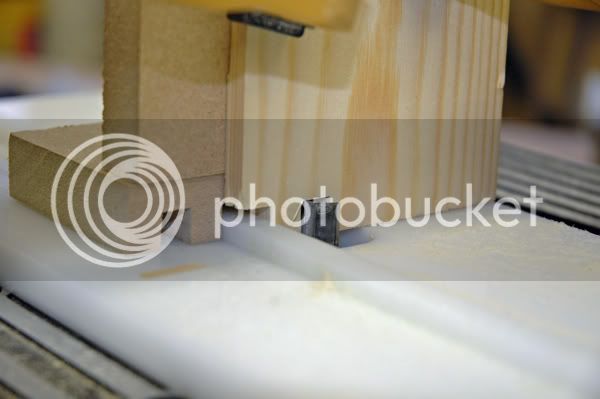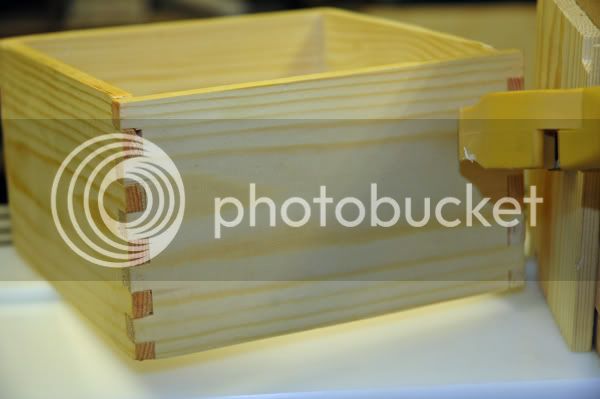Smudger
Established Member
The jigs arrived today from Oak Park in Canada. Good service, only about 2 weeks from ordering.
I was seriously hacked off by Parcelfarce - charged me £8 to collect £9 duty, made me call an expensive phone line and gave me none of the information I wanted, tried to charge me £12 for a Saturday delivery (I live 2 miles from their depot) and took my credit card OUT OF THE ROOM to do the transaction. When I complained the 'employee' turned his back on me! Incredible level of service...
Anyway - the jigs are lovely, simple things. You have to set them up by clamping one to the router table and running some test pieces, then drilling the table and bolting it down. The others then use the same holes, though I have only used the 3/8" one so far. Worked fine first time. I then made up a sled for guiding the work through. The first run had got a bit closer to my fingers than I preferred!
I made a test joint, wasn't bad, then made up a small box (6" square) out of some rough timber scrap. As I want it for making drawers that seemed appropriate. I wasted one piece - hadn't clamped the work well enough and it moved when offered up to the cutter. Otherwise - fine, and the first box carcase glued up inside an hour and a half of opening the box. A bit rough (some tear out due to the quality of the softwood - I think it may be balsa!) but accurate enough for a first go, and the joints fit very well indeed.
Knackered a router cutter - I moved the sled over by mistake, and the cutter found the fixing screw inside... But that's the learning curve, I suppose.
A happy bunny.
I was seriously hacked off by Parcelfarce - charged me £8 to collect £9 duty, made me call an expensive phone line and gave me none of the information I wanted, tried to charge me £12 for a Saturday delivery (I live 2 miles from their depot) and took my credit card OUT OF THE ROOM to do the transaction. When I complained the 'employee' turned his back on me! Incredible level of service...
Anyway - the jigs are lovely, simple things. You have to set them up by clamping one to the router table and running some test pieces, then drilling the table and bolting it down. The others then use the same holes, though I have only used the 3/8" one so far. Worked fine first time. I then made up a sled for guiding the work through. The first run had got a bit closer to my fingers than I preferred!
I made a test joint, wasn't bad, then made up a small box (6" square) out of some rough timber scrap. As I want it for making drawers that seemed appropriate. I wasted one piece - hadn't clamped the work well enough and it moved when offered up to the cutter. Otherwise - fine, and the first box carcase glued up inside an hour and a half of opening the box. A bit rough (some tear out due to the quality of the softwood - I think it may be balsa!) but accurate enough for a first go, and the joints fit very well indeed.
Knackered a router cutter - I moved the sled over by mistake, and the cutter found the fixing screw inside... But that's the learning curve, I suppose.
A happy bunny.



































